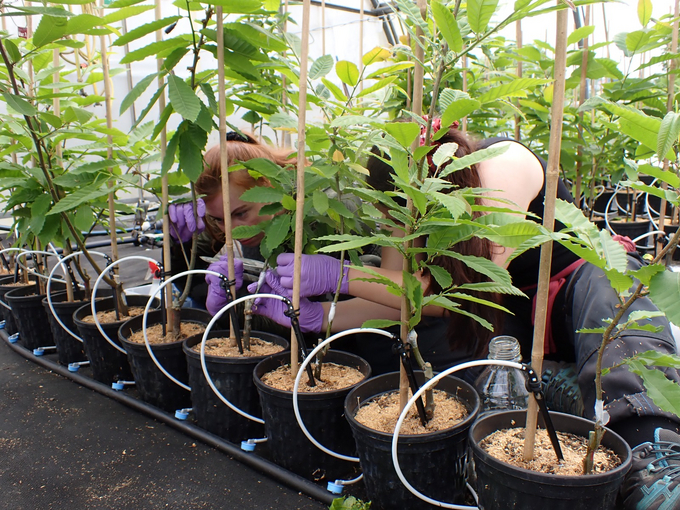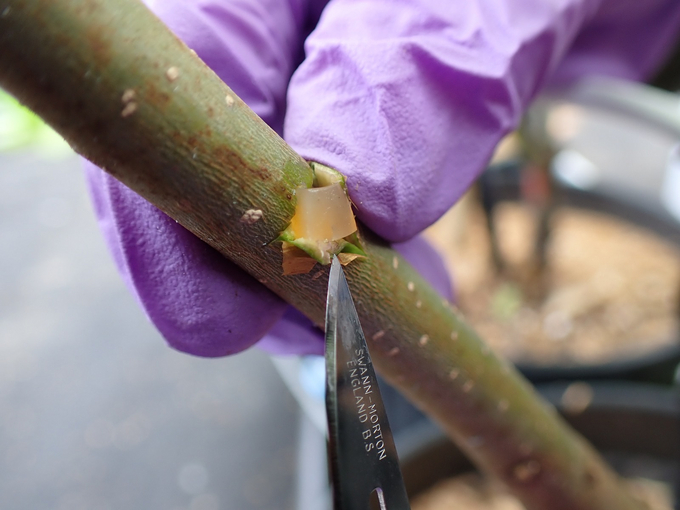Summary
The EIP-AGRI CASTANEA innovation project is dedicated to the development of sustainable measures to combat chestnut blight in sweet chestnut plantations using the fungus Trichoderma spp. as a biological antagonist. The aim is to develop an effective strategy against the harmful fungus Cryphonectria parasitica and thus secure the sweet chestnut as a crop for agricultural and forestry operations in the long term.
Project description
The chestnut blight(C. parasitica), originally from East Asia, was introduced to the USA at the beginning of the 20th century and almost completely destroyed the American chestnut forests there. The fungus was first detected in Europe in 1938 and spread rapidly, including in Austria.
Sweet chestnut cultivation has increased significantly in Austria in recent years, with around 200 hectares of sweet chestnut plantations now being cultivated. Chestnut blight is a major challenge, as it can cause crop losses of up to 90 % in intensive agricultural systems. The fungus penetrates the plant tissue of the trees via wounds, impairs the transport of water and nutrients and leads to the death of the branches or the entire tree. Despite various preventive measures, the infestation is difficult to prevent as the spores are spread by wind, birds and infected wood. There are no effective control measures, and existing methods such as hypovirulence paste are expensive or currently not available in Austria.
The EIP-AGRI project CASTANEA aims to develop measures to reduce damage, in particular through the use of Trichoderma spp. as a biological antagonist. AGES is part of the operational group in the project and carries out controlled trial activities in the greenhouse and laboratory tests to test the effectiveness of Trichoderma spp. and find sustainable solutions.


Benefits of the project
CASTANEA is pursuing a promising approach: the natural antagonist Trichoderma spp. is to be used for the first time specifically to combat the fungus in the field. A preliminary study by two partners of the EIP-AGRI project CASTANEA with T. atrobrunneum showed promising results for inhibiting and killing the harmful fungus. The fungus Trichoderma spp. uses specific enzymes to specifically attack and suppress the harmful fungus, which enables longer-term biological control. It has also been shown that T. atrobrunneum can establish itself permanently on wood - an important factor for its effectiveness on tree bark. The aim of the project is to further develop these approaches in laboratory and field studies and to develop practical recommendations for chestnut cultivation.
Project details
Project title: CASTANEA
Project management: Simon Hof (sweet chestnut cultivation), Carinthia
Project management AGES: Ulrike Persen
Project partners: Simon Hof (sweet chestnut cultivation), MycoSolutions AG (production and development of mushroom formulations based on Trichoderma), Haidegg fruit and wine-growing experimental station in Styria (experimental design & scientific support), ARGE Zukunft Edelkastanie (consulting & knowledge transfer). Meißelhof (sweet chestnut cultivation)
Funding: Funded by the EU, federal and state governments as part of the European Innovation Partnership EIPAGRI
Project duration: 01.11.2024 - 31.10.2027
Last updated: 28.08.2025
automatically translated